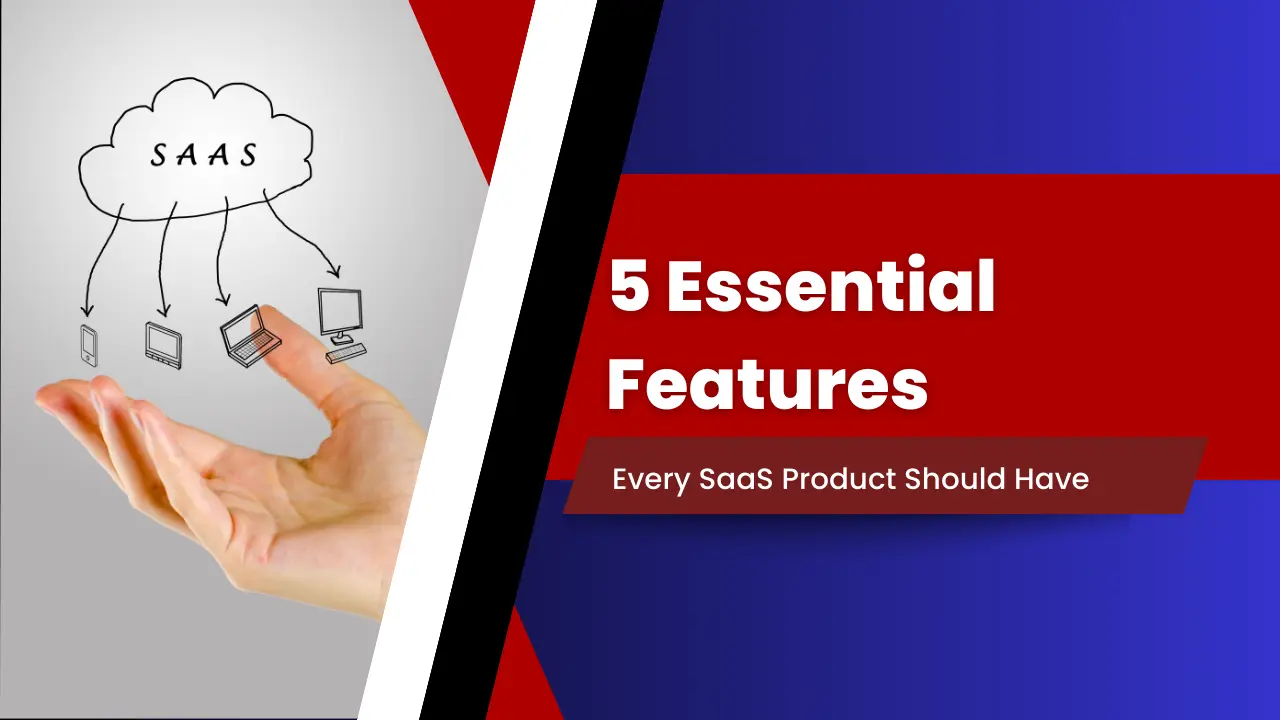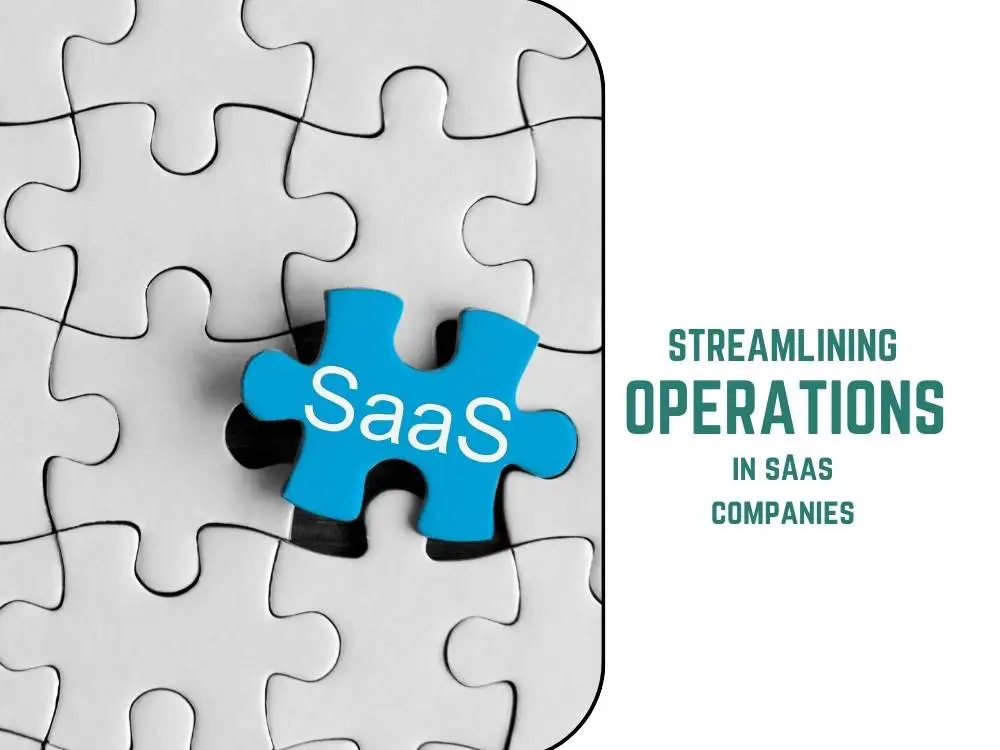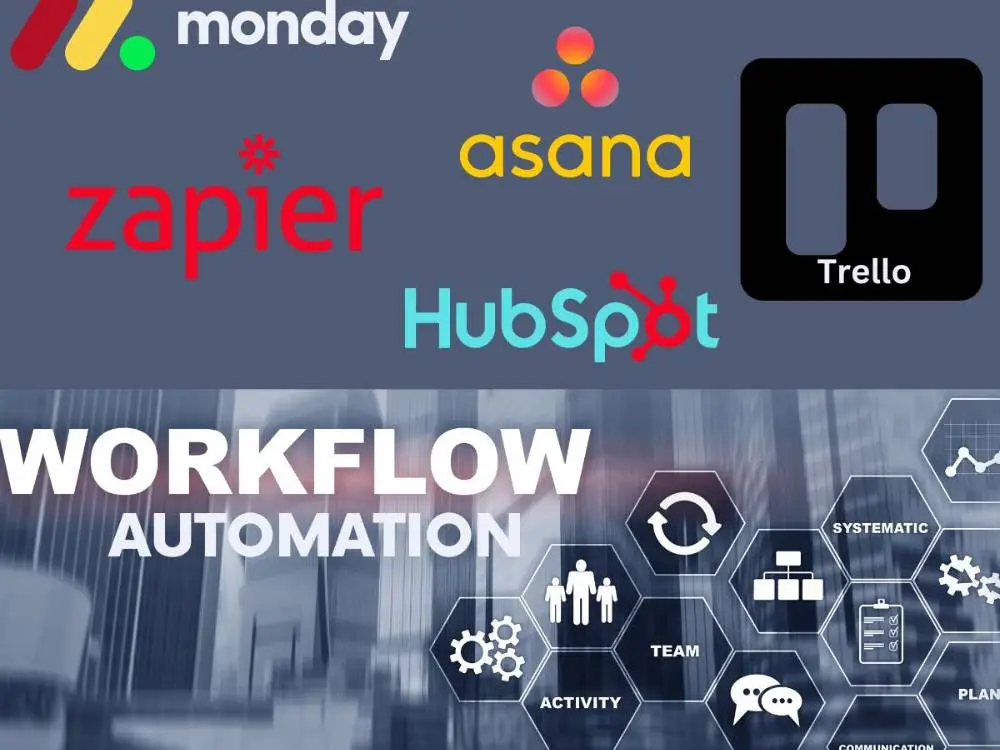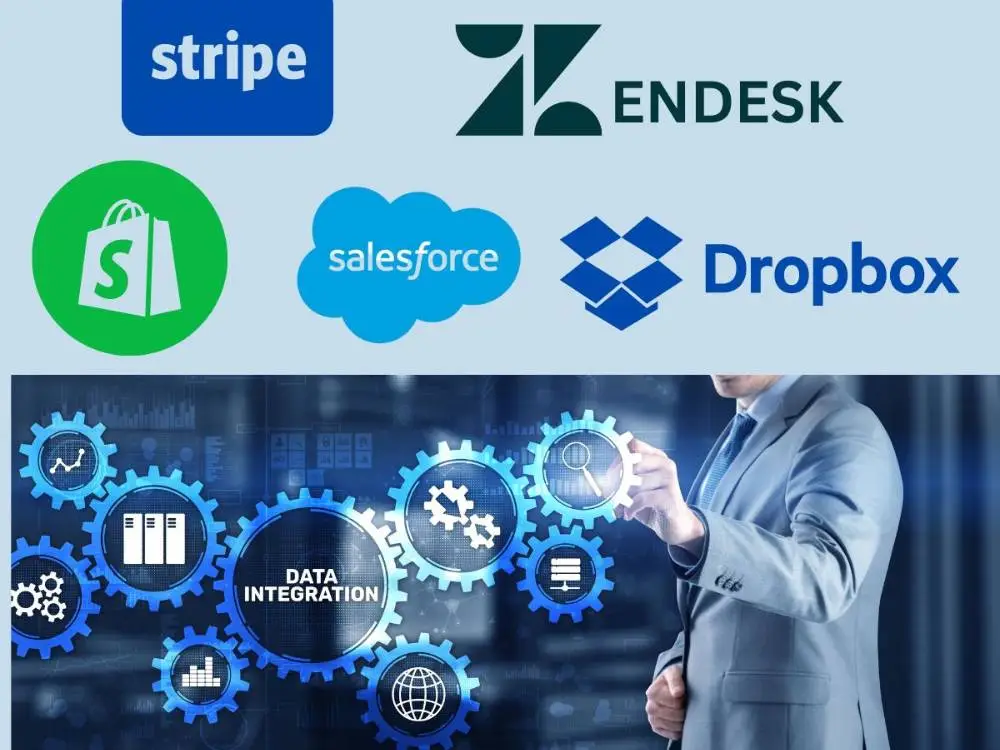
Streamlining Operations: 5 Essential Features Every SaaS Product Should Have
SaaS is an abbreviation for “Software as a Service”. It delivers different cloud-based software applications to customers through third-party providers over the Internet. It's generally based on a subscription pricing model. Customers pay to use the software tools online on a recurring monthly or annual payment basis.
SaaS is a subset of cloud computing that offers convenience to users, allowing them to access software from anywhere in the world via an internet connection. It's not necessary to install the particular software on the customers’ personal computers or other devices to access it.
There are many good SaaS providers in the market, including Smart Tools AI itself. The primary purpose of this business model is to simplify tasks for users across various niches.
Article Overview
- Understand the significance of streamlining operations in SaaS companies to uplift productivity, reduce costs, and enhance customer service.
- Learn about the role of automated workflows in improving efficiency, reducing errors, and saving time for more strategic tasks.
- Discover the benefits of integration capabilities in facilitating better data transfer, reducing manual entry, and improving user experience.
- Explore the importance of scalability in handling growing demand and maintaining performance.
- Recognize the value of data analytics and robust security features in making informed decisions, protecting sensitive information, and maintaining customer trust.

Reasons Why Streamlining Operations is Important in SaaS Companies
SaaS companies should prioritize streamlining their operations to stay competitive and provide exceptional customer service. Streamlining operations effectively helps eliminate inefficient activities and processes, which leads to increased productivity and cost savings.
Additionally, it helps reduce communication gaps and redundancies while saving ample time that is being spent on doing tasks. Similarly, streamlining operations lets SaaS companies actively respond to market trends and changes in customer needs.
It also makes a clear path for SaaS companies to adapt to new changes quickly and to make sure that their customers get constant and efficient service delivery.
Feature 1: Automated Workflow

The Role of Automation in SaaS Streamlining
The first essential feature that we are going to talk about in a SaaS product is the Automated workflow. SaaS products are getting traction day by day, and because of this increasing demand, customers’ expectations are rising. Here, SaaS companies should include all necessary features in their product to match customers' expectations.
Among these essential features, an automated workflow stands as a vital element for any SaaS product. Its objective is to facilitate and streamline important business processes and boost efficiency. Through workflow automation, manual intervention is reduced, which helps enhance accuracy and reduce errors.
Consequently, the user experience becomes smoother and enables the software to maintain its competitiveness in a saturated market.
Benefits of Automated Workflow
Automation in SaaS companies brings significant benefits by enhancing efficiency and productivity. By automating repetitive tasks, team members can easily save their valuable skills and expertise for more strategic projects.
Moreover, project turnaround times are accelerated, and the company's ability to handle new business increases. Automated workflows can also help manage and control the risk of human errors and provide precise data. This improves decision-making and boosts customer satisfaction.
Another crucial benefit of an automated workflow is cost savings, as it eliminates the need for manual labor and reduces overhead expenses.
Real-Life Examples of Successful SaaS Companies That Utilize Automated Workflow
Below are some real-life examples of successful SaaS companies that utilize automated workflows in their SaaS products.
- Zapier: Zapier is a popular SaaS platform that enables users to connect and automate workflows between different web applications. It lets users create "Zaps," which are automated tasks triggered by specific events or actions in different apps. Zapier's automation capabilities help businesses streamline their processes and enhance productivity.
- Asana: Asana is another example of a cloud-based project management tool. It includes automated workflows to enable teams to collaborate and stay organized. Further, it offers vital features for work task assignments, progress tracking, and deadline reminders that can be automated to streamline project management and improve efficiency.
- HubSpot: HubSpot offers an all-in-one marketing, sales, and customer service platform with integrated automation capabilities. Their workflow tool allows businesses to automate repetitive tasks, promote leads, send targeted emails, and manage customer interactions at various stages of the buyer's journey.
- Monday.com: Monday.com is a collaboration and work management platform that leverages automated workflows to streamline project management, task tracking, and teamwork. It presents a visual workflow builder that lets users automate repetitive actions, set up notifications, and integrate with other tools and platforms.
- Trello: Trello is another popular project management tool that uses automated workflows to assist teams in organizing and collaborating on tasks. Through its power-ups feature, users can integrate Trello with other apps and make automation rules to trigger actions and streamline their workflow processes.
Feature 2: Integration Capabilities

Integration Capabilities: Connecting SaaS for Efficiency
Integration with other software and systems is really important for a SaaS product. This feature allows users to easily access and transfer data among various systems. Every SaaS product should have this integration capability feature to increase efficiency and user experience (UX). This means users don’t need to switch between different applications or platforms constantly to perform their tasks.
This feature can effectively reduce manual data entry procedures and errors. This saves ample time for the users. Moreover, a SaaS product won't sustain itself in the competitive market without having this necessary feature. Most of the users seek a complete integration feature in every SaaS product to improve their workflow.
Benefits of Integration Capabilities in SaaS Companies
Integration provides multiple benefits to both businesses and end users. These capabilities facilitate a more efficient workflow by automating tasks and avoiding consuming more time. This means that employees can utilize time to concentrate on more important tasks to increase work productivity.
Moreover, integrations help businesses deliver various services to their customers that improve the customer experience and loyalty. Plus, it allows a robust multiple data sources that lead to more precise and comprehensive reporting.
Real-Life Examples of Successful SaaS Companies That Utilize Integration Capabilities
The following examples are successful SaaS companies that leverage integration capabilities to deliver their users a seamless and connected experience across multiple tools and platforms.
- Shopify: We all know Shopify because of its popularity. It allows users to create e-commerce stores online and has a robust integration system. Shopify owners or users can integrate their store with various other apps or platforms that help them automate marketing, manage inventory, perform accounting, and other tasks.
- Zendesk: Zendesk is a popular customer service and support platform where its users can utilize the integration capability with different channels and tools like email, social media, live chat, CRM systems, help desk, and many others.
- Stripe: Stripe is a well-known online payment processing SaaS company that allows business owners to make payment processes convenient. With the help of a suite of APIs and integration capabilities that connect Stripe with other platforms where credit card or debit card payment is made easily,
- Salesforce: Salesforce is a leading customer relationship management (CRM) platform that delivers extensive integration capabilities. It provides connectors and APIs that enable businesses to integrate Salesforce with other systems, such as marketing automation tools, ERP optimization, and customer service platforms.
- Dropbox: Dropbox is a cloud storage and file-sharing platform that has integration capabilities with various productivity tools and services. It allows various apps to be integrated with the user's Dropbox accounts, like Microsoft Office, Google Workspace, Slack, and many others.
Feature 3: Scalability

Scalability in SaaS: Preparing for Growth
Scalability is another vital feature that a SaaS product should possess. It refers to the product's ability to effectively handle and adapt to the growing demand and usage over time.
Businesses continue to grow or sometimes face downfalls, where the software products they use should have the necessary scalable features. This feature is important to match the user’s requirements when their business grows or falls.
Moreover, this scalability feature improves the user experience (UX) in peak usage times without any issues. Therefore, users look into this feature in every SaaS product they purchase. Plus, SaaS companies should pay proper attention to incorporating this feature to meet their customers' expectations.
Benefits of Scalability in SaaS Companies
The scalability feature in SaaS companies provides numerous benefits. For example, businesses get advanced features and plans when they scale up. On the other hand, they can scale down to a basic option when they require minimal usage.
SaaS products commonly offer different plan options to their customers as follows, and it is convenient to scale up or down.
- A basic plan of any SaaS product contains basic program facilities to run and manage user tasks
- The premium plan offers more advanced options than the basic package
- Enterprise/Business plan offers more convenient features, like the team collaboration feature
Further, a scalable feature in SaaS companies lets their users bravely expand their market where the product covers a broader audience, which is a huge benefit for the companies.
Real-Life Examples of Successful SaaS Companies That Utilize Scalability
Here are some real-life examples of successful SaaS companies utilizing scalability to support their customers to increase growth, and handle increased demand.
- Netflix: Netflix is a famous SaaS that streams movies and video content with millions of subscribers. The company has a scalable feature that allows it to manage massive volumes of streaming data and match it to an expanding user base.
- Amazon Web Services (AWS): AWS is a cloud computing platform provided by Amazon. It offers scalable and flexible digital infrastructure services such as computing power, storage, and databases to businesses of all sizes. With AWS, companies can swiftly scale their resources up or down based on the demand they have. Plus, it ensures they match the capacity they need without overprovisioning.
- Slack: Slack is a team collaboration platform that has experienced rapid growth and adoption. With its scalable architecture, Slack can handle real-time communication for millions of users and messages. As Slack has extended its user base, it has continued to invest in scalable infrastructure to maintain high availability and performance.
- Twilio: Twilio is a cloud communications platform that provides developers with a variety of APIs and tools to integrate voice, video, and messaging features into their applications. Twilio's scalability is a crucial aspect of its success. As developers integrate Twilio's services into their applications and experience increased usage and demand, Twilio's platform can scale to handle the growing communication needs.
- Zoom: Zoom is a video conferencing platform that gained immense popularity during the COVID-19 pandemic. The platform's scalability was critical in handling the sudden surge in demand for virtual meetings and while working from a home office. Zoom quickly scaled its infrastructure to accommodate millions of simultaneous users to ensure a smooth and reliable video conferencing experience.
Feature 4: Data Analytics

Leveraging Data Analytics in SaaS Operations
Data Analytics helps businesses make well-informed decisions. SaaS products must have this feature to empower their users in analyzing key metrics and vital indicators. With this essential feature, companies get to know about customers' behaviors, product or service performance, and market trends.
Data analytics is a crucial feature that helps companies make reliable strategic decisions that lead to enhanced customer satisfaction, improved product quality, and increased overall productivity and growth.
Benefits of Data Analytics in SaaS Companies
Businesses get several benefits as data analytics provides clear insights to help with important decision-making on different aspects. Data analytics in SaaS companies provides a clear picture where users can find out their business performance.
By using these valuable data insights derived from analytics, organizations can improve their operational efficiency by allocating resources effectively and cutting unnecessary costs. In essence, data analytics in SaaS companies is a must-have feature for users to harness the essential benefits.
Real-Life Examples of Successful SaaS Companies That Utilize Data Analytics
Here are some real-life examples listed below of successful SaaS companies utilizing data analytics.
- Snowflake: Snowflake is a renowned cloud-based data platform that provides businesses with the capability to easily store, analyze, and acquire valuable insights from extensive amounts of data that originate from various sources. Its advanced analytics features have contributed to its popularity among organizations striving to harness the full potential of their data.
- Palantir: Palantir is a famous SaaS company that stands as another successful example in the area of data analytics solutions. They focus on data integration, analysis, visualization, and developing software platforms. It's broadly utilized across diverse industries, including finance, healthcare, and government. Their goal is to assist organizations in comprehending intricate data sets, enabling data-driven decision-making processes.
- Splunk: Splunk is a prominent SaaS company based in the United States. It specializes in providing software that facilitates data searching, analysis, and monitoring through a user-friendly interface. Leveraging its powerful analytics platform, Splunk helps businesses convert machine-generated data into valuable insights. Their exhaustive solution allows organizations to effectively monitor operations, uplift performance, detect anomalies, and enhance security measures.
- Alteryx: Alteryx is a self-service analytics platform that allows users to access, prepare, and analyze data without requiring coding skills. It offers a range of tools for data blending, advanced analytics, and predictive modeling. Alteryx empowers firms to unlock the value of their data and make informed decisions.
- Looker: Looker is a prime illustration of a thriving SaaS that leverages data analytics. It serves as a business intelligence platform that empowers organizations to explore and visualize their data. Looker provides a range of tools for data investigation, reporting, and embedded analytics, facilitating insightful discoveries, seamless data sharing among teams, and well-informed decision-making.
Feature 5: Security

Ensuring Robust Security in SaaS
Security is another crucial feature that we finally have on this list. This feature is essential when it comes to any software product, as SaaS products frequently deal with sensitive and confidential information. The SaaS product should have adequate measures in place to safeguard data against hacks and breaches.
It's also necessary to offer users high-level encryption to make sure that their data is safe and cannot be accessed by unauthorized third parties. Moreover, the SaaS product must also follow the best methods to secure coding and perform routine security audits to preserve its integrity.
SaaS companies should make their security features transparent to their users to get the trust of the customers that they can use the product without any fears.
Benefits of Security in SaaS Companies
Every SaaS company must ensure that its software product has the necessary security features. By having this feature, users and SaaS companies get multiple benefits. Users feel relaxed that their vital information is safeguarded from hacking, cyberattacks, and other potential threats of data breaches. It lets them feel safe while using the SaaS product.
Further, SaaS companies get more customers by having robust security features in their products. People are only attracted to secure software programs. Ultimately, the security feature is a must-have in every SaaS product, and it equips businesses with several benefits.
Real-Life Examples of Successful SaaS Companies That Utilize Security
The following examples highlight successful SaaS companies that prioritize security and provide creative solutions to protect businesses from cyber threats and unauthorized access.
- Okta: Okta is a renowned identity and access management (IAM) platform that guarantees secure user authentication and access control. It provides businesses with strong identity management, single sign-on (SSO), and multi-factor authentication (MFA) functionalities that bolster security measures and thwart unauthorized access.
- CrowdStrike: CrowdStrike serves as a cloud-native endpoint security platform that is dedicated to safeguarding businesses' digital assets against cyber threats. By harnessing the power of artificial intelligence and machine learning, it quickly identifies and addresses advanced malware and intrusions, which ensures real-time detection and proactive security measures.
- Palo Alto Networks: Palo Alto Networks provides a vast range of network security solutions, including next-generation firewalls, cloud security, and threat intelligence platforms. These offerings play a pivotal role in guarding business networks and data from cyberattacks that ensuring secure connectivity and preventing unauthorized access.
- Qualys: Qualys is another example of utilizing security features in their SaaS product as a prominent provider of cloud-based security and compliance solutions. Their platform contains a wide range of offerings such as vulnerability management, threat intelligence, and web application security services. Using Qualys, businesses can take a proactive approach to identify and tackle security risks, ensuring the safeguarding of critical assets.
- Cisco Umbrella: Cisco Umbrella is a cloud security platform designed to shield businesses from malware, phishing, and various internet-based threats. It has secure DNS records and the ability to block malicious websites. It empowers organizations to thwart attacks and implement robust security policies across all devices and locations.
Final Thoughts
SaaS companies should prioritize features like automated workflows, integration capabilities, scalability, data analytics, and robust security in their SaaS product. These features can improve operational efficiency, productivity, and user experience.
Automated workflows can effectively eliminate manual tasks, integration capabilities ensure smooth data transfer, scalability aids for accommodating growth, data analytics help for efficient decision-making, and robust security features can protect sensitive data.
By prioritizing these vital features, SaaS companies can streamline operations, meet customer expectations, and thrive in a competitive market.
FAQs
Q1: Why are automated workflows important for SaaS companies?
Automated workflows can be efficient in saving time and avoiding manual tasks, which enhances efficiency and reduces errors.
Q2: How do integration capabilities benefit SaaS companies?
Integration capabilities allow seamless data transfer between different systems and ensure smooth operations and improved productivity.
Q3: What role does scalability play in SaaS companies?
Scalability helps SaaS companies handle increasing workloads and accommodate growth without compromising performance or user experience.
Q4: Why do SaaS companies have a data analytics feature?
Data analytics provides useful insights to companies to make informed business decisions. Therefore, SaaS companies should have this feature to offer complete data insights.
Q5: How does robust security impact SaaS companies?
Robust security measures can protect sensitive data, maintain customer trust, and safeguard against cyberthreats, which ensures the integrity of the SaaS platform.
Explore Related Posts
https://smarttoolsai.com/post/kyb-know-your-business-regulations-processes-and-best-practices
https://smarttoolsai.com/post/liveness-detection-secure-customer-onboarding-and-business-operations
.webp)